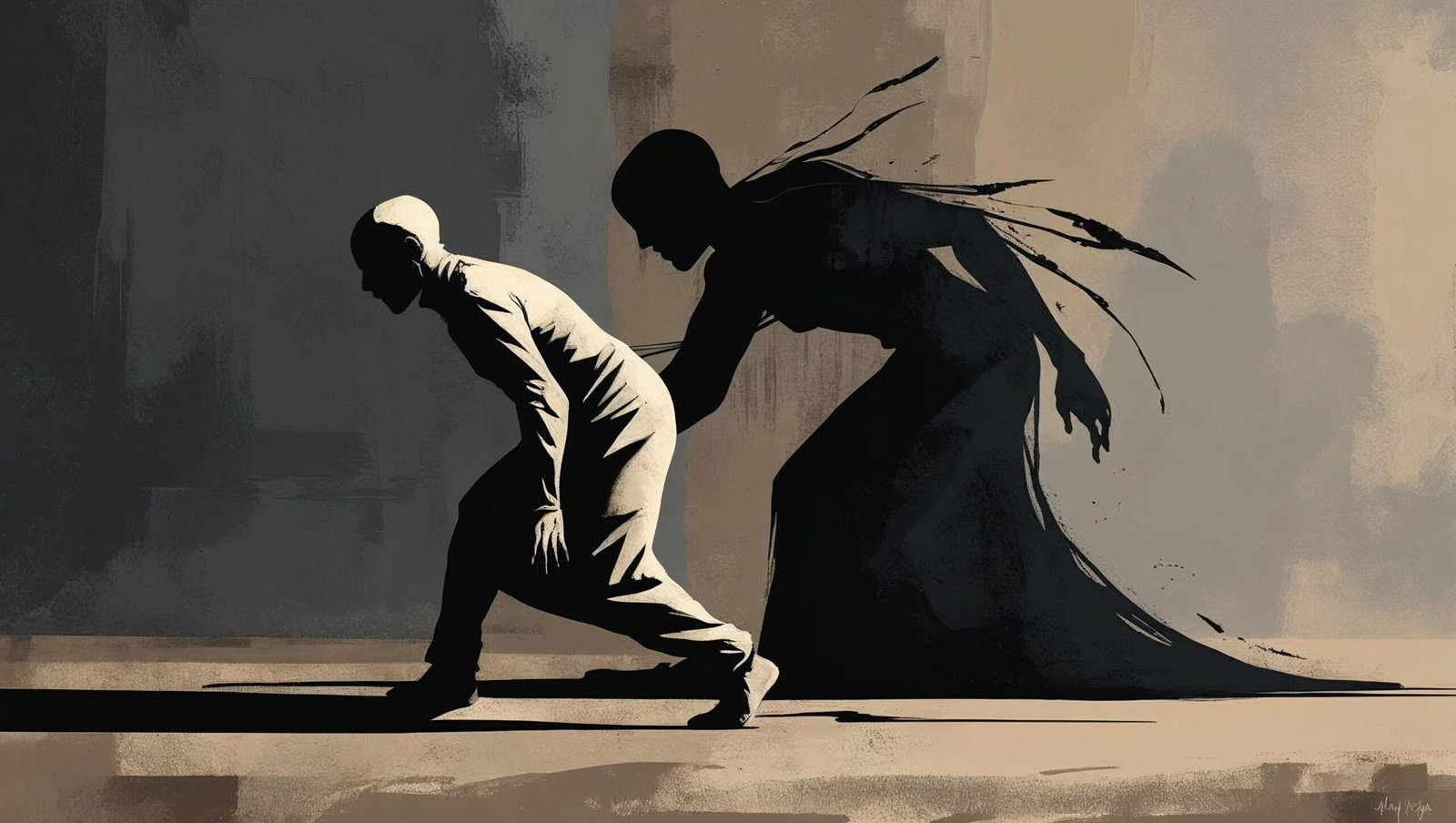Transformative Insights from The War of Art by Steven Pressfield to Conquer Resistance and Ignite Your Creative Potential
Introduction:
In an age where distraction is ubiquitous and creative paralysis is the silent epidemic of the modern era, Steven Pressfield’s The War of Art emerges as a powerful clarion call. Far beyond a conventional self-help book, The War of Art dissects the root of our internal struggles with brilliance and brutal honesty. It introduces Resistance—the unseen force that undermines ambition, delays action, and sabotages dreams. Through this detailed review of The War of Art, we explore how this work equips readers to overcome Resistance and lead lives of purpose and creative authenticity.

Lesson 1: Identifying the Enemy Within — Understanding Resistance
Pressfield unveils Resistance in The War of Art as a universal, invisible force that thrives in avoidance, procrastination, and fear. He personifies Resistance to help readers grasp its insidious nature. It doesn’t take the form of external obstacles but lurks within—manifesting as excuses, distractions, and inner criticism. Understanding that Resistance is not personal, but a predictable response to any act that seeks growth, is the first empowering message this book conveys.
Resistance appears whenever we attempt any act of creativity, self-discipline, or spiritual growth. Whether you’re writing a book, starting a business, or changing a habit, Resistance whispers that you should wait until tomorrow. Pressfield insists in The War of Art that recognizing Resistance is the first step toward defeating it. In this way, the book becomes a spiritual manual for inner warfare.
Lesson 2: The Amateur Versus the Professional
A major breakthrough comes through Pressfield’s distinction between the amateur and the professional. The amateur dabbles, waits for inspiration, and fears failure. The professional, on the other hand, shows up daily, prepared for the struggle, and embraces discipline. This dichotomy, a central concept in The War of Art, shifts the paradigm for anyone stuck in a loop of creative inertia.
Professionals commit. They don’t complain or negotiate with Resistance; they go to work. They accept no excuses. Turning pro is less about talent and more about mentality. It’s a decision to step beyond comfort, into the arena where success and failure are just part of the job. This is perhaps one of the most liberating lessons in The War of Art.
Lesson 3: The Ritual of Work and the Power of Habit
Drawing from his own writing routine, Pressfield emphasizes in The War of Art the importance of ritual. He stresses that Resistance cannot survive in the face of consistent routine. By establishing a sacred time and place for creative work, we strip Resistance of its strength.
Habits matter more than motivation. We don’t wait for inspiration to act; we act and allow inspiration to meet us along the way. The power of habit is the antidote to the erratic behavior encouraged by Resistance. This wisdom from The War of Art is essential for creatives across all disciplines.
Lesson 4 : Resistance Feeds on Fear — Learning to Work Through It
Fear is Resistance’s favorite tool. Pressfield admits in The War of Art that fear is inevitable and even desirable—it signals what matters most. What we fear doing is usually what we are most called to pursue.
By confronting fear head-on, the artist grows. The book doesn’t advocate fearlessness but courage. The courage to sit in discomfort, to embrace the unknown, and to keep working when the outcome is uncertain. Courage is a muscle that grows stronger with each encounter with Resistance, as The War of Art teaches.

Lesson 5 : Invoking the Muse — The Spiritual Side of Creativity
The narrative transitions into the metaphysical when Pressfield discusses the Muse in The War of Art. Drawing upon ancient Greek beliefs, he encourages readers to invoke divine inspiration through consistent work. He believes that when we approach our work with reverence and dedication, the universe aligns with our efforts.
This spiritual approach deepens the message. It’s not merely about personal success or productivity; it’s about aligning oneself with a higher calling. Creative individuals are channels, and when they commit, the Muse responds, as illuminated in The War of Art.
Lesson 6 : Resistance and Rationalization — Lies We Tell Ourselves
Rationalization is Resistance in disguise. The author illustrates in The War of Art how Resistance will co-opt reason, logic, and practicality to divert us from our calling. It tells us we’re too tired, too inexperienced, or that the timing isn’t right.
He dismantles these lies with precision. The perfect moment never arrives. The only cure is to start now, with whatever tools we possess. It is a rallying cry against the endless postponement that characterizes unfulfilled potential. The War of Art calls for immediate action.
Lesson 7 : The Life Beyond Resistance — A Call to Action
The ultimate message of The War of Art is liberation. On the other side of Resistance lies a life of purpose, integrity, and creative joy. Pressfield doesn’t promise ease; he promises transformation. Every day we confront Resistance is a victory over fear and inertia.
The book ends not with a final answer but a beginning. It challenges readers to commit, to turn pro, and to live as if their art matters—because it does. In this way, The War of Art is less about theory and more about daily practice, a battle plan for the soul.
Lesson 8 : Resistance Attacks Our Identity
One of the subtler yet profound insights from The War of Art is how Resistance doesn’t just delay tasks—it erodes identity. Pressfield reveals that Resistance attacks at the very core of who we are becoming. It doesn’t simply stop us from writing a book or painting a canvas—it persuades us that we’re not writers or artists at all. This internal assault can slowly erode our self-image.
The War of Art reminds us that our identity is formed not by our thoughts but by our actions. If you write, you are a writer. If you run daily, you are a runner. Pressfield urges readers to shift their self-image by behaving like the person they aspire to be, regardless of their doubts. By adopting the mindset and habits of a professional, we begin transforming our identity, breaking free from the false narratives Resistance tries to implant.
Lesson 9 : The Importance of Territory Over Hierarchy
In one of the more philosophical chapters of The War of Art, Pressfield draws a distinction between working territorially and hierarchically. A hierarchical mindset constantly compares and competes—it seeks approval from society, peers, and critics. A territorial mindset, in contrast, is grounded in the love of the craft itself. When we work from our territory, we create because it fulfills us, regardless of external validation.
The War of Art suggests that working from your territory creates a shield against Resistance. It makes us more resilient, as our drive comes from within. This territory could be your home studio, your morning writing routine, or your meditation space—any sacred zone where your creativity flows freely. The book emphasizes nurturing this space and treating it as a source of power, not a place for performance.

Lesson 10 : Resistance Never Sleeps
One of the sobering truths in The War of Art is that Resistance is relentless. It doesn’t disappear once we’ve written one book, launched one business, or meditated for a week. It evolves with us. As we grow, so does Resistance—becoming more sophisticated, more convincing, and more persistent.
Pressfield warns that success does not mean immunity from Resistance. In fact, the stakes grow higher. A bestselling author still battles Resistance when sitting down to write the next book. A renowned artist still faces self-doubt before beginning a new project. The War of Art reframes this as a lifetime war—not a battle won once, but a war waged daily.
This realization doesn’t discourage—it prepares us. Knowing that Resistance will always be present gives us an edge. We stop being surprised by its presence and instead become masters of anticipating and countering it.
Lesson 11 : Resistance and the Ego — Dismantling the False Self
Pressfield draws a fascinating link between Resistance and the ego. In The War of Art, he points out that our ego thrives on fear, comparison, and insecurity. Resistance is the ego’s tool—it inflates our doubts and magnifies potential failures.
The spiritual undertone of The War of Art becomes clear here: to overcome Resistance, we must outgrow the ego. This means letting go of the need for perfection, applause, or external recognition. It means surrendering to the process itself. The ego seeks comfort; the soul seeks growth. Every time we confront Resistance, we weaken the ego’s grip and strengthen our higher self.
This transformative idea adds emotional and spiritual depth to The War of Art, making it not only a practical guide but a journey toward authenticity and self-realization.
Lesson 12 : Resistance Targets Love and Purpose
One of the most startling realizations in The War of Art is that Resistance targets the things we love the most. Pressfield explains that the more important a calling or action is to our soul’s evolution, the more Resistance we will feel toward it.
This seems counterintuitive at first. Shouldn’t our deepest passions be the easiest to pursue? But The War of Art teaches that the opposite is true. The closer we are to fulfilling our purpose, the louder Resistance becomes. It knows that the consequences of succeeding in our mission are transformative. Resistance is terrified of our evolution.
Understanding this principle reframes our struggle. Instead of dreading the Resistance we face, we begin to welcome it. It becomes a compass, guiding us toward what truly matters. In this way, The War of Art transforms frustration into insight and fear into fuel.
Lesson 13 : The Power of Commitment
Commitment is another central theme in The War of Art. Pressfield emphasizes that once we truly commit to a creative endeavor, unseen forces come to our aid. This isn’t mystical fluff—it’s a powerful psychological and energetic shift. The act of commitment eliminates distractions and excuses. It narrows our focus and channels our energy.
When we’re half-committed, Resistance thrives. It has loopholes to exploit. But full commitment is a closed system—it leaves no room for Resistance to wiggle in. The War of Art drives home the idea that the universe supports those who are all in. Once we commit, synchronicities occur, people show up, and clarity emerges.
This lesson is not only empowering—it’s practical. It urges readers to stop waiting for ideal conditions and start moving. To commit is to declare war on Resistance. And in doing so, we take back control of our lives.
Lesson 14 : Turning Pro Means Enduring Boredom
A truth rarely acknowledged in motivational books is the role of boredom in creative work. Pressfield doesn’t sugarcoat this. In The War of Art, he admits that turning pro means learning to endure boredom, repetition, and the mundane aspects of work.
Not every day is inspiring. Not every session feels magical. But the professional shows up regardless. This realism is what sets The War of Art apart. It doesn’t offer fantasies—it offers a grounded, battle-hardened truth. Mastery is built in the quiet hours, the disciplined minutes, the unglamorous grind.
The War of Art helps readers understand that excellence is born not of rare inspiration but of consistent, uncelebrated effort. If we can fall in love with the process—even the boring parts—we can achieve what we once thought impossible.

Lesson 15 : Creative Work is a Sacred Responsibility
Perhaps the most uplifting lesson in The War of Art is that creative work is sacred. It’s not selfish or trivial—it’s a gift to the world. Pressfield challenges the notion that pursuing your art is indulgent. Instead, he argues that suppressing your gifts is the real betrayal.
This redefines success. It’s no longer about fame, money, or metrics. It’s about doing the work we’re meant to do. Pressfield writes that our art has the power to heal, to inspire, and to elevate others. Every time we create, we participate in something divine. The War of Art makes it clear that the world needs your art, not someday—but now.
This sacred perspective gives weight to every word written, every song composed, and every brushstroke made. It transforms creative work into spiritual service. And that, perhaps, is the most powerful message The War of Art delivers.
Final Thoughts: Living the Teachings of The War of Art
The enduring brilliance of The War of Art lies in its ability to cut through the noise. It doesn’t coddle—it challenges. It doesn’t promise comfort—it offers transformation. Steven Pressfield’s message is as relevant today as ever, especially in a world saturated with distraction and performance anxiety.
By identifying Resistance, understanding its tactics, and applying disciplined, professional action, readers can liberate their creativity. But more than that, The War of Art encourages us to live with integrity—to become who we are meant to be. Each page is a battle cry against mediocrity and a prayer for authenticity.
If you’ve ever felt stuck, afraid, or overwhelmed by the gap between your dreams and your actions, this book is for you. Not to read passively, but to study and embody. Because, as The War of Art so powerfully affirms: the most important battles are not fought in the world—but within.
FAQs
Q: Who should read this book?
A: Anyone facing procrastination, creative blocks, or fear in pursuing meaningful projects will benefit greatly.
Q: Is it only for artists or writers?
A: No, it is useful for entrepreneurs, students, professionals, and anyone seeking to overcome internal resistance.
Q: What is the central theme?
A: The core message centers on identifying and overcoming the internal forces that prevent us from realizing our potential.
Q: How does it help in daily life?
A: It promotes discipline, self-awareness, and a mindset that supports consistent effort across various endeavors.
Q: Is the advice practical or philosophical?
A: It offers a powerful combination of philosophy and actionable strategies to break through barriers.

Conclusion: Why You Should Read This Book
Steven Pressfield’s work is more than just a guide — it is a call to arms for anyone struggling with creative blocks and internal doubts. By naming the invisible obstacles that hold us back, this book offers practical tools and motivation to overcome them. Its blend of honesty, spirituality, and actionable advice makes it a lasting resource for creative freedom.
Let its words inspire transformation. Read it, revisit it, and most importantly, apply its lessons in your life.
Visit: shubhanshuinsights.com
Reader Comments:
- “Reading this blog changed the way I approach my mornings and my mindset. A masterpiece!”
- “Thank you for this detailed review. It reminded me why I started creating in the first place.”
- “This blog together form a powerful duo. Highly recommended for anyone stuck in self-doubt.”